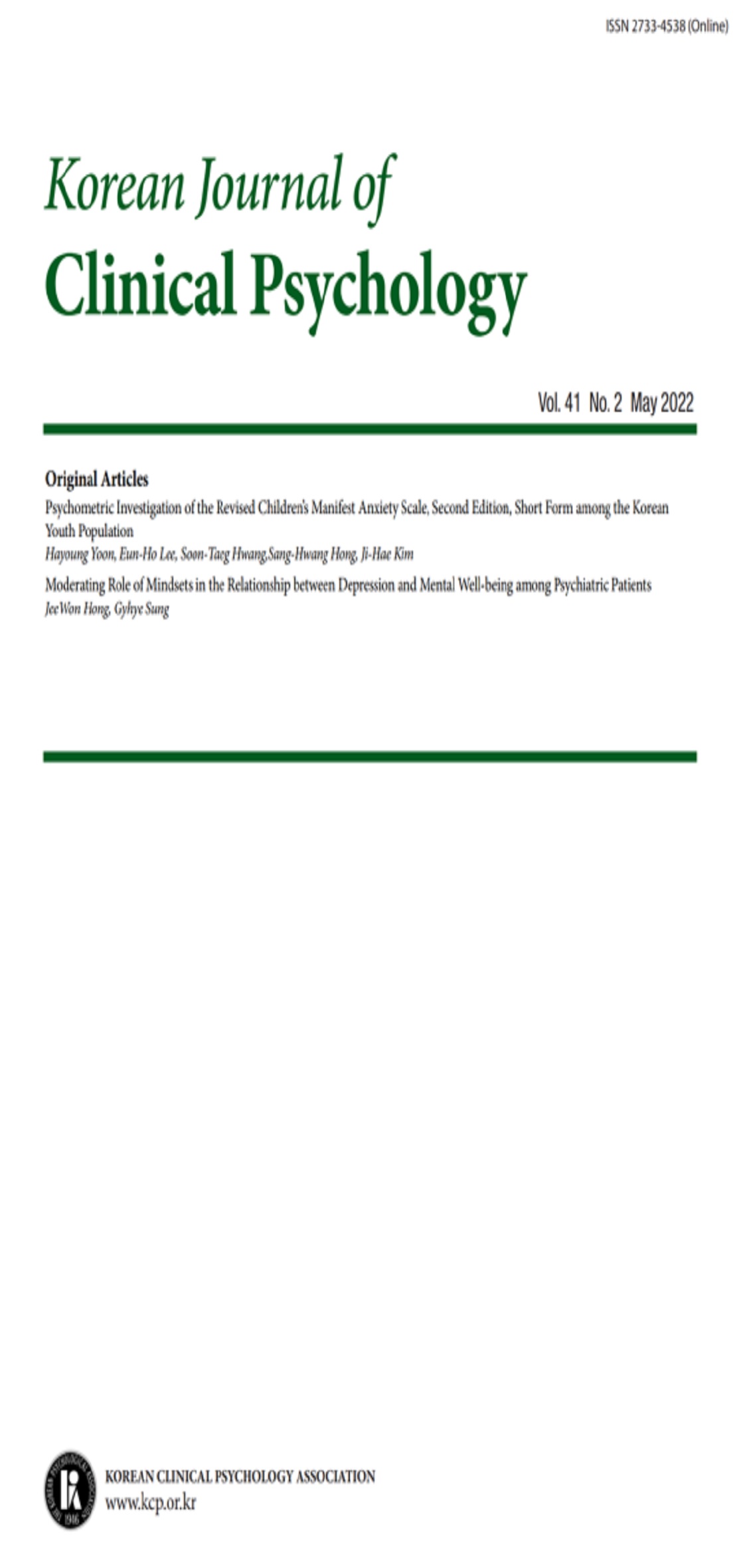open access
메뉴
open access
메뉴 E-ISSN : 2733-4538
E-ISSN : 2733-4538

본 연구는 발표불안에 대한 인지행동집단치료의 효과를 확인하고, '발표불안 자동적 사고 질문지 (Speech Anxiety Automatic Thoughts Questionnaire, SAATQ)'가 치료적 개입으로 인해 나타나는 인지적 변화를 민감하게 측정하는 지를 검증하고자 하였다. 발표불안이 심한 것으로 분류된 대학생들 중 인지행동집단치료에 끝까지 참여했던 내담자들 (=치료집단)과, 8주 간격으로 발표불안척도 (Speech Anxiety Scale)와 SAATQ를 두 번 작성했던 대학생들 (=무처치 통제집단)을 비교하였다. 무처치 통제집단의 발표불안정도는 8주 전과 후에 유의한 차이를 보이지 않았던 반면에, 치료집단은 치료 전에 비해 치료 후에 그들의 발표불안정도가 현저하게 감소하였다. 이러한 두 집단간의 차별적인 양상은 SAATQ로 측정된 발표불안 관련 부정적인 자동적 사고의 빈도에서도 똑같이 나타났다. 게다가 치료 전에는 두 집단간에 유의한 차이를 보이지 않았으나, 치료 (또는 8주) 후에는 치료집단의 부정적인 자동적 사고의 빈도가 무처치 통재집단에 비해 두드러지게 낮아졌다. 이러한 결과들은 인지행동집단치료가 발표불안을 완화시키는데 매우 효과적이라는 점과, SAATQ가 치료효과에 민감한 평가도구라는 점을 시사한다.
This study aimed to examine not only the effectiveness of a cognitive-behavioral group therapy for speech anxiety but also the question of whether the Speech Anxiety Automatic Thoughts Questionnaire (SAATQ) would be sensitive to cognitive change with treatment. Speech anxious undergraduates who completed a cognitive-behavioral group therapy (=CBGT group) and those who reported both their speech anxiety and negative automatic thoughts twice before and after 8 weeks (=no-treatment control group) were compared. Clients in the CBGT group improved significantly on the SAS, whereas Ss in the no-treatment control group did not. This differential pattern between groups was also apparent in the frequency of negative automatic thoughts measured by the SAATQ. Moreover, the SAATQ showed greater cognitive change in the CBGT group compared with the no-treatment control group. These findings suggest that the CBGT is very effective in the treatment of clients with speech anxiety and that the SAATQ is sensitive to treatment effects.
